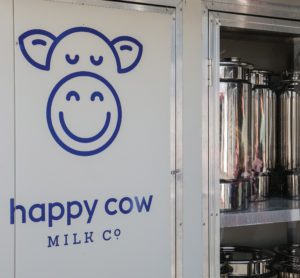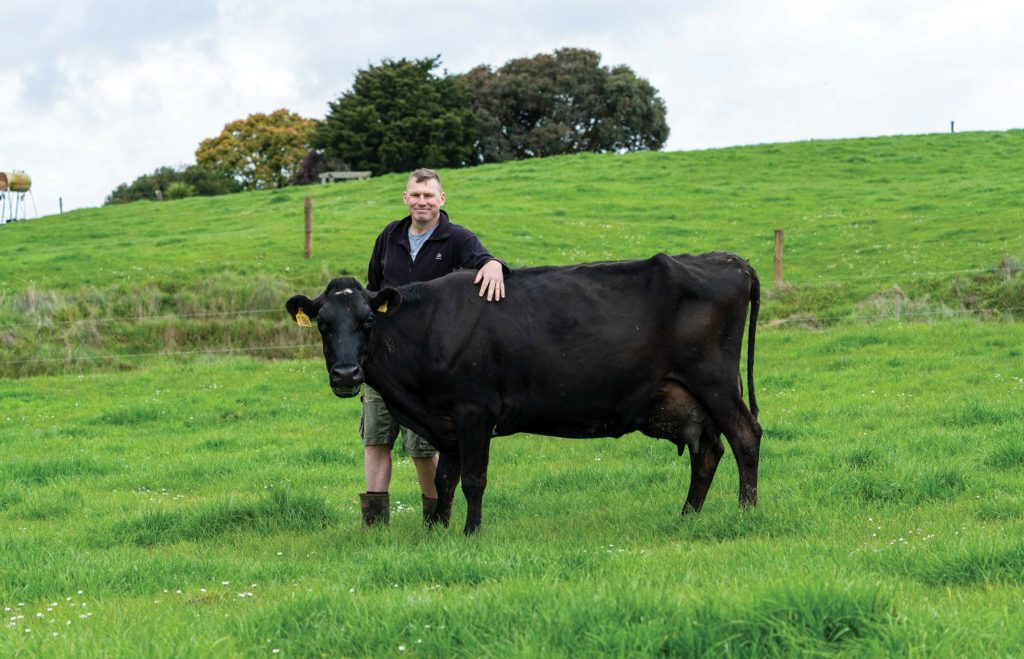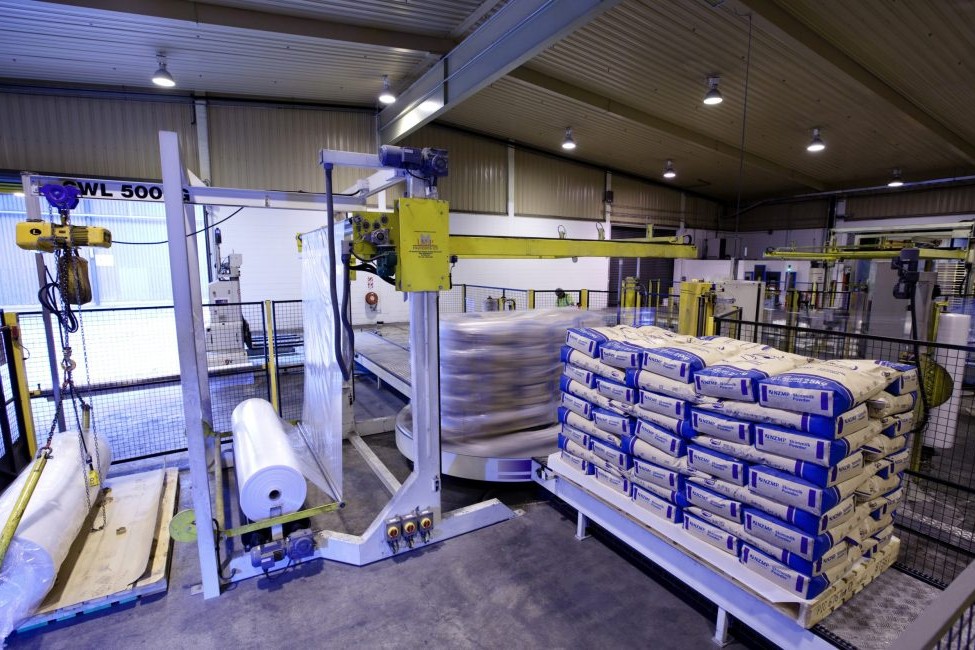Glen Herud wants to connect consumers directly with dairy farmers, give farmers a bigger share of the retail milk price and win some hearts and minds but he’s also thinking global and wants to take his concept and the milk factory in a box technology to the world. Anne Lee talks to Glen and a farmer taking on the idea, Chris Falconer.
It’s no secret that Glen Herud has raised the hackles of some dairy farmers.
The corollary of promoting his Happy Cow Milk company as a more caring, kinder, fairer dairy could be seen to suggest the rest are less so.
He gets that and can see why someone who “failed so spectacularly”, his words, at the first iteration of his business might not get a good hearing from farmers when he derides debt levels in the sector, difficulty in getting a foothold on the farm ownership ladder and dairying’s image.
Demonising traditional and large-scale dairying isn’t his aim, though, he says.
In fact, dairying in general could benefit from Happy Cow Milk’s promotional methods as it seeks to connect consumers directly with the farmers they buy their milk from.
Happy Cow Milk farmers’ point of difference is that they keep calves with their mothers until they’re old enough to be weaned.
Farmers are also expected to be able to supply milk year-round so calving won’t be a spring or autumn-only event.
Removing calves from cows is something that tugs at the heartstrings of many consumers and that’s what Happy Cow Milk has homed-in on.
“As a farmer you can have all the data or research in the world to back your system, but people don’t hear that.
“It’s not enough to tell those detailed farming stories – the only people listening to them are other farmers.
“You can tell people you’ve spent $300,000 on an effluent system, tell them the data from the scientific studies, show them you’ve got Overseer, but they don’t really engage with that.
“People aren’t going to stop scrolling unless there’s something in it for them.
“What we’re doing is making the public the heroes of the Happy Cow Milk story.
“We want the public to feel like they’re their local food heroes.”
People want to feel they’re making a difference, that they’re doing something towards creating a better world and Happy Cow Milk wants to show them they can drink cow’s milk without consumer guilt.
Apart from keeping calves with cows and calving more frequently there aren’t any
other specific requirements on farmers.
Glen doesn’t envisage a raft of audited farming standards – there are plenty of those from other regulatory bodies.
He also expects the consumers will be the regulators to a degree.
Farmers will communicate directly with consumers via the company app and their own social media or media channels.
“People want that kind of connection. They want to develop those kinds of relationships and what you find is that once they’re invested in that relationship, they’re going to defend their purchasing decision.”
Consumers, the public, will be going into bat for “their” dairy farmer, he says.
Milk to market
For the last two years Glen’s been working on his 2.0 version and freely admits he’s had to rely on the generosity of his supporters just to survive.
Now, with a prototype pretty much ready to go, he’s recently held a successful capital-raising that brought in $560,000.
The investment from the public has been in exchange for shares totalling about 25% of Happy Herd Milk Company.
The 2.0 version has addressed the issues behind the demise of the company’s first outing.
“It didn’t work basically because it was inefficient. It took three people to do the work, but there was only enough income to pay two.
“The processing was hard – bottling milk at that small scale, managing the regulatory requirements and bookwork – that was hard and then there was the distribution – that was hard. They took up a lot of time.
“What we didn’t have a problem with was selling the milk – there was plenty of demand and a very willing market.
“So what we’ve been focusing on for the last two years is removing the inefficiencies and making it easier.
“Things like the regulatory burden – digitising that so the information (such as real-time milk temperature) can be stored in the cloud and audited.
“We’ve created the software and hardware that can do the milk processing and meet all the regulatory requirements.
“We’ve created a milk factory in a box, basically, and created this streamlined system so a farmer can just pump milk into the tanks, the system pasteurises the milk in each tank and then it cools it.
“We’ve done away with bottles.
“The farmers can then take those tanks, put them on to any truck and take them to the retailer, a school, a café – anywhere they want to.
“The vats are cooled by an icebank at the site where the milk is sold and they plug into our dispensing systems.”
Co-working space collabs
Glen has developed the software and the hardware for both the processing and dispensing using the technical know-how of people he’s met while working at a co-working office space in Christchurch, [Salt] Works.
People using the facility include entrepreneurs, engineers, designers, creatives – just about anyone who needs working space, and it was at a chance meeting over the coffee machine that Glen got to talking to a software engineer.
“I told him what I was working on and my ideas and he said yea, he could build that.
“So we found a rice cooker in the cupboard and got to work on measuring temperatures, collecting the data and storing it.
“Then I met another guy who’s ended up coming on board as our lead designer who could do the engineering and design work and bring it all together.”
The automated system uses hot water to heat the vats to the correct temperature for pasteurisation with real-time monitoring and GPS-tracking installed on the tanks so that at any time from when the milk first comes into the vat to the time it’s dispensed it’s possible to see what the milk temperature is and where the vat is.
If anything goes wrong alerts are sent to the farmer immediately.
“So we’ve streamlined the processing and regulatory side hugely – instead of lots of bottles going to a customer, like a retailer or a café three or four times a week we can take a vat once or twice a week and all the bookwork is being done automatically.”
Another big innovation has been at the point of sale with the dispensing equipment.
It’s been set up so a café can dispense a pre-set amount for it’s milk jugs for steaming but its also capable of having a customer fill their own container with a totally different amount.
The smart system can dispense just what’s asked for within the 2% margin required under New Zealand Weights and Measures regulations, can identify who has dispensed it and then charge or debit their account.
At the same time the customer is charged and pays, the retailer’s account is credited with their cut and the farmer’s account is credited with theirs – there is no waiting for the 20th of the month for payment.
Glen says the milk will retail for $2.80/litre with whoever has the dispenser system installed receiving 50c/litre, Happy Cow Milk receiving 50c/litre and the farmer receiving $1.80/litre.
If the farmer has the dispenser on their farm they’d receive $2.30/litre.
While there’s no shortage of interest from NZ dairy farmers Glen says he’s already been fielding enquiries from California, Sweden and Australia.
“We want to be a global dairy company that takes a cut of locally sold milk all around the world.”

Sharing milk with the calves
Chris Falconer has been talking to potential customers for his farm’s milk and looking at how to practically operate with calves at foot for almost a year.
He will be one of the first farmers to adopt the Happy Cow Milk system over coming months and plans to “feel his way” into the system on the 350-cow, once-a-day milking, Waerenga farm where he and his wife Sheila have already gone bobby-free and moved away from synthetic fertiliser.
“I’ve been following Glen from when he began with Happy Cow Milk – I’ve always been interested in people doing things differently and how we can be paid for that, how we can capture extra value.
“The way we do milk in New Zealand – it’s so homogenous.
“The big companies take it and literally homogenise it but it’s also homogenous in the sense that they take milk from everyone’s systems and put it together.
“That’s not to say any one system is better than the other, but if you want to do something different – it’s been very difficult to get rewarded for that,” he says.
Glen’s new “milk factory in a box” processing system has overcome a lot of the issues commonly seen in getting your own milk to market and allows the farmer to get on with farming, albeit with some marketing and building relationships with consumers and retailers. Chris has already been getting alongside cafés, retailers and schools to find out what their needs are and how delivering his pasteurised, whole milk to them could solve problems for them. He says he’s spent a lot of time in cafés in Auckland – not an unpleasant way to do market research – and found the system using stainless steel vats coupled with the smart dispensing system will solve a big headache in terms of dealing with hundreds of plastic milk containers.
“That’s not to be under-estimated, they have crates and crates of them and there’s a growing move against plastic and a few concerns over recycling.”
He’d found cafés using as much plant-based milk as cows’ milk and based on discussions with baristas and café owners found it was often because of a “feel-good” factor in terms of addressing environmental or animal welfare concerns.
“If we can offer them solutions to their concerns, answer those concerns honestly, be transparent and authentic with the way we’re farming then why wouldn’t they go with this wholly natural product – with nothing added, not homogenised – just pasteurised.”
The key is communicating what’s going on at the farm level and in Chris and Sheila’s case if the concern is about bobby calves, they don’t have them.
All their calves are reared as beef animals with all replacement cows bought in.
If the concern is artificial fertiliser, they don’t use any.
“If the concern is palm kernel, we don’t use any of that either. If they want to talk about soil health or water quality, we can have a conversation with them on that too and talk about all the things we’re doing on the farm.”
In response to farmers feeling put down by Happy Cow Milk’s promotion of itself as being a more caring, kinder and fairer dairy, Chris says that when you look at the proportion of NZ’s milk production sold on the domestic market there shouldn’t be an issue.
“With so much of it exported you’re not standing on anyone else’s toes – you’re probably standing on a few egos, though.
“If you’re so confident and happy with your system, why are you worried about what someone else is doing?”
He’s quite open with the fact he’s always looking at “how to do things better” and says he’s been researching and trialing keeping calves on cows.
He’s spoken to animal behaviourists and systems designers and he’s concluded that giving calves choices at various points as cows are coming in for and during milking is the way to go.
He’s looked at setting up gates so they’re split horizontally, allowing calves to duck under the upper part while keeping cows where you want them.
“I think what we’ll see is some calves will come right in and some will choose to wait outside the yard, some might move right through and wait for their mums on the other side.
“As long as they feel they have a choice and we’re not forcing them to do something they’ll be calmer.”
He milks OAD at 6am and says he’ll start milking cows as usual on day one after calving but the colostrum cows will be close to the farm dairy to make sure the walk isn’t too much for the newborns.
By day five he expects calves will cope easily with the OAD walk from other paddocks across the farm.
He already uses split calving but will shift to calving three times a year to give a more even milk flow and to ensure more-consistent properties in the milk itself.
“It’s all been very informal research so far into how we’ll do this – it’s not something you can look up in the DairyNZ Facts and Figures book – there’s no handbook.
“We’ll feel our way along with it and get started using the smaller vats Glen’s been using to develop the system and then we’ll move into the 200-litre vats.
“I’m really confident that based on the research I’ve done out there with possible customers the milk we’re going to be producing is going to be highly valued and highly sought-after so we’re not obsessing about getting big volumes.”
His annual milk production under his current system is 320-330kg milksolids (MS)/cow. He’s been talking with schools, cafés and supermarkets and says the feedback has been very positive.
The way the dispensing system works makes it simple for him and customers to use.
“The way Glen’s got it working now, it’s very straight forward and something we’re looking forward to getting set up.”
Chris says he and Sheila are about to start selling beef and veal under their own, soon to be revealed brand and it’s likely the milk will be sold under the same brand with Happy Cow Milk brand underpinning it.





